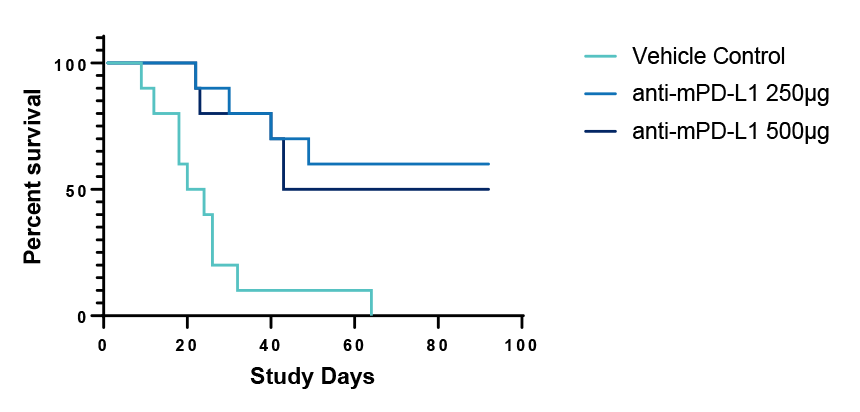GL261 Syngeneic Model
Synonyms: GL261 glioblastoma cell line, GL261 mouse glioma cell line
GL261 is a widely used cancer cell line derived from murine glioblastoma. It serves as a valuable tool in brain cancer research, providing insights into tumor biology, invasion, and response to treatments. These cells exhibit characteristics similar to human glioblastoma, making them suitable for studying the disease. GL261 cells have a glioblastoma-like morphology and are capable of forming tumors in animal models. Researchers utilize GL261 to investigate various aspects of glioblastoma, including genetic alterations, signaling pathways, immune responses, and drug sensitivity. It has been extensively employed in preclinical models to evaluate the efficacy of different therapeutic approaches, including chemotherapy, radiation therapy, immunotherapy, and targeted therapies. The GL261 cell line plays a crucial role in advancing our understanding of glioblastoma and developing novel strategies for its diagnosis and treatment.
Model Details
Cancer Type: Brain Cancer
Model Name: GL261
Mouse Strain: C57BL/6
Treatment Data Available: aPD-L1, aCTLA-4, Chemotherapy
GL261 Treatment Response to aPD-L1

Survival of GL261 in orthotopic intracranial models in C57BL/6 mice (n=10) . aPD-L1 dosced on day 1, 4, 7, 10.
Request Additional Syngeneic Model Data
CONTACT US
Get Started.
Have questions about how TD2 can assist with your regulatory needs? Reach out to our expert staff today to get started.


